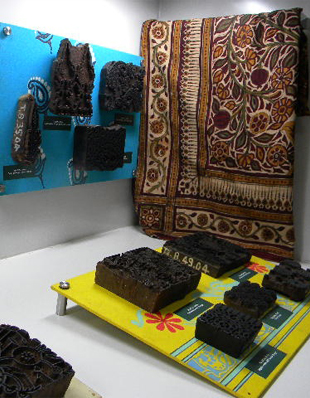
Introduction
One of the ancient handicrafts of the Deccan that was becoming famous in India is the process of dye making and block printing. In Pochampalli in the Nalgonda district of the Andhra Pradesh, it is the striking red and black dye which is still an indispensable art. The process is both intricate and subtle and there are only a few places in India where this art still survives.
Just as the Indian Craftsman in general expresses the peoples instinct for beauty, so the Indian dyer expresses in his art, the Indian womens love of colour. Indian technology has a hoary past. Some woven and printed textiles were found at Mohenjodaro in the Indus Valley. Their textile technology ranged from simple dyeing yarns or weavers applying methods like pattern designs with coordination of multiple carved stamps or blocks.
The decorative motifs of the block vary from floral, faunal, geometric, rings, dots and zigzag arrangement. Peepul leaves seems to be the most common theme. Building structure, creeper, climber design, lotus flower, peacocks are also found in the textile blocks.
Types of prints:
The industry of dyeing and printing with local vegetable colours is known as Kalamkari work.
The printing methods are classified into three types, namely,
- Block prints.
- Block printed and hand painted.
- Hand painted only.


